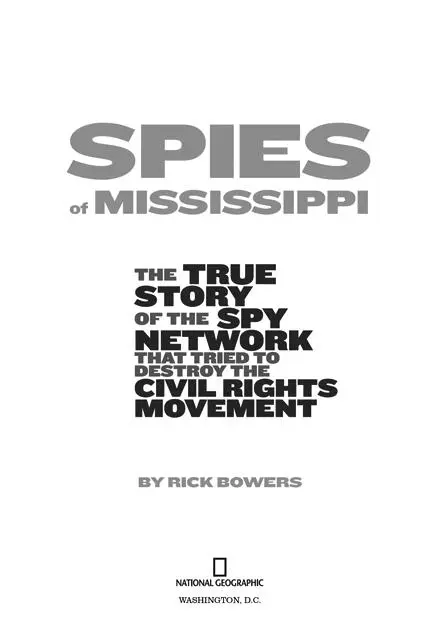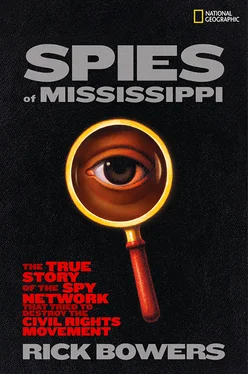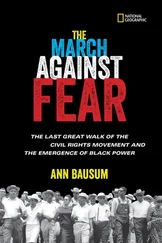
Copyright © 2010 Richard J. Bowers.
All rights reserved. Reproduction of the whole or any part of the contents without written permission from the publisher is prohibited.
The National Geographic Society is one of the world’s largest nonprofit scientific and educational organizations. Founded in 1888 to “increase and diffuse geographic knowledge,” the Society works to inspire people to care about the planet. It reaches more than 325 million people worldwide each month through its official journal, National Geographic , and other magazines; National Geographic Channel; television documentaries; music; radio; films; books; DVDs; maps; exhibitions; school publishing programs; interactive media; and merchandise. National Geographic has funded more than 9,000 scientific research, conservation and exploration projects and supports an education program combating geographic illiteracy. For more information, visit nationalgeographic.com.
For more information, please call 1-800-NGS LINE (647-5463) or write to the following address:
National Geographic Society
1145 17th Street N.W.
Washington, D.C. 20036-4688 U.S.A.
Visit us online at www.nationalgeographic.com/books
For librarians and teachers: www.ngchildrensbooks.org
More for kids from National Geographic: kids.nationalgeographic.com
For information about special discounts for bulk purchases, please contact National Geographic Books Special Sales: ngspecsales@ngs.org
For rights or permissions inquiries, please contact National Geographic Books Subsidiary Rights: ngbookrights@ngs.org
Library of Congress Cataloging-in-Publication Data
Bowers, Rick, 1952-
The spies of Mississippi : the true story of the spy network that tried to destroy the civil rights movement / by Rick Bowers. – 1st ed.
p. cm.
Includes bibliographical references.
ISBN 978-1-4263-0595-5 (hardcover : alk. paper) – ISBN 978-1-4263-0596-2 (library binding : alk. paper)
eBook ISBN: 978-1-4263-0736-2
1. Mississippi State Sovereignty Commission–History. 2. African Americans–Civil rights–Mississippi–History–20th century. 3. African Americans–Segregation–Mississippi–History–20th century. 4. States’ rights (American politics)–History–20th century. 5. Mississippi–Politics and government–1951-6. Mississippi–Race relations. 7. Civil rights movements–Mississippi–History–20th century. I. Title.
E185.93.M6B69 2010
323.1196’0730762–dc22
2009018944
v3.1
Version: 2017-07-05
Cover
Title Page
Copyright
Dedication
Acknowledgments
Foreword
Prologue
1 The Genesis
2 Growing Outrage, Growing Backlash
3 The “Bible”
4 The Pipeline
5 The Delta Blues
6 Death of a Dream
7 The Savior of Segregation
8 The Clandestine War
9 Never, Never Land
10 Overflowing the Jails
Photo Inserts
11 The Battle for Ole Miss
12 In the Dead of the Night
13 The Secret Benefactor
14 Agent X
15 Marked Men
16 The Magnolia Curtain
17 “Destroy This Directive”
What Happened Next
Documents
Bibliography
Quote Sources
Photo Credits
With profound love and joy to Wynn, Neva, and Helen
I wish to thank my wife, Wynn, for her constant support and dedication to this endeavor. The compelling images in this book are due to her expert and relentless research. Special thanks to National Geographic editor Nancy Feresten, who immediately recognized the power of the concept and steadfastly guided the progress of the work. A special appreciation to the staff at the Mississippi Department of Archives and History, who were always there to aid in the search for information and to open new pathways to insight and understanding. In fact, throughout the state, archivists, librarians, and historians openly shared important pieces of the civil rights story under their purview. Special thanks to friends who listened to the stories, provided encouragement, and even helped with early ideas and edits. Naturally, I offer a heartfelt thanks to the civil rights pioneers who shared their memories with me. It was a profound honor to hear their recollections of the past and to witness their continuing quest for justice.
You are about to encounter the spies and counterspies, agents and double agents, informants and infiltrators of the Mississippi State Sovereignty Commission—the secret, state-funded spy program formed to stop the march toward equality and justice in the 1950s and 1960s. You will also encounter dedicated civil rights workers and fearless student activists, truth-telling journalists and justice-seeking lawyers who dared to challenge the status quo imposed by the seemingly all-powerful state. The United States was founded on the ideals of equal opportunity for all—white and black, Hispanic and Asian, gay and straight, old and young. Achieving these ideals demands constant vigilance to protect our civil liberties against unwarranted government intrusion in our private lives. Standing on the shoulders of those who came before, we are called upon to defend—and to extend—those essential civil and human rights.
Wade Henderson
President and CEO,
Leadership Conference on Civil Rights
Twelve of the most powerful men in the state controlled a secretive network of spies and informants.A cadre of covert operatives used code names like Agent X, Agent Y, and Agent Zero. Neighbors spied on neighbors. Teachers spied on students. Ministers spied on churchgoers. Spies spied on spies. This is not the description of a Cold War–era secret police force or a futuristic sci-fi dictatorship. This government-run spy network infiltrated the lives of private citizens right here in the United States and not too long ago—in the state of Mississippi during the height of the civil rights movement of the 1950s and 1960s.
The Mississippi State Sovereignty Commission operated as a clandestine investigative arm of the state government for more than a decade. It compiled secret files on more than 87,000 private citizens and organizations. Staffed by a team of professional agents and funded by taxpayers, the commission had a fundamental mission: to save segregation at all costs. In the process, its agents carried out the most extensive state spying program in U.S. history.
How do we know all this is true? The Commission itself tells us. The 134,000 pages and 87,000 names in its once-secret investigative file tell the story of its clandestine programs, its network of neighborhood informants, its brutal behind-the-scenes maneuvering, and its intervention in many of the most significant events of the civil rights era. In their own words, the agents reveal their tactics for infiltrating civil rights groups, forcing liberal college professors out of their jobs, collaborating with white racist organizations, and rewarding black leaders for supporting segregation.
The extensive investigative file does not tell the whole story, however. For this book, I’ve filled out the story with oral histories, personal memoirs, historical studies, academic dissertations, government documents, and newspaper and magazine articles from the era. In addition, I’ve traveled Mississippi—from the cotton fields in the Mississippi River Delta to the beach towns on the Gulf Coast to the capital of Jackson—interviewing people connected to the story. I’ve also uncovered surveillance documents and photographs, including a hand-drawn map showing the burial site of three murdered civil rights workers and photos of student protesters with red numbers scrawled next to their faces. Those numbers targeted the “subversives” for further investigation.
Читать дальше













